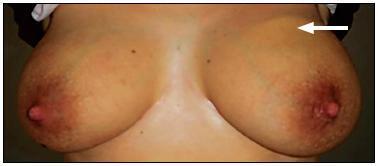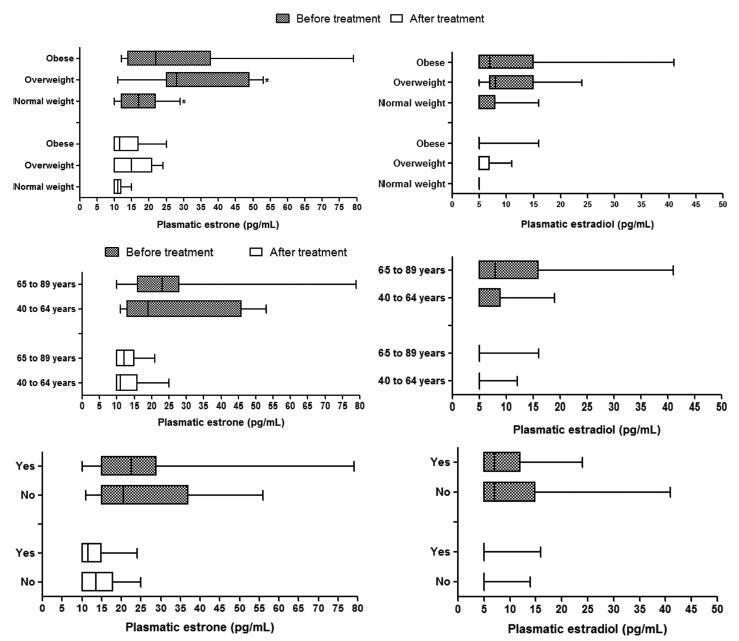Summary
Revista Brasileira de Ginecologia e Obstetrícia. 2009;31(3):138-141
DOI 10.1590/S0100-72032009000300006
PURPOSE: to report three cases of spontaneous gestation in women with polycystic ovarian syndrome (PCOS), that occurred in the months subsequent to transvaginal oocyte retrieval for in vitro maturation (IVM). METHODS: three infertile patients with PCOS, submitted to oocytes' IVM without previous ovarian stimulation, were included in the study. During the procedure of oocytes' collection, each ovary was drilled from four to eight times. RESULTS: none of the patients got pregnant with the IVM technique. Evaluating the cases' follow-up, in seven months after the procedure, the three patients got pregnant without the help of techniques of assisted reproduction, which resulted in three births. CONCLUSIONS: the multiple drillings in the ovary of these patients with PCOS, during the process to collect oocytes, may have contributed to their pregnancy in the months following the procedure.
Summary
Revista Brasileira de Ginecologia e Obstetrícia. 2006;28(3):139-142
Summary
Revista Brasileira de Ginecologia e Obstetrícia. 2011;33(3):139-143
DOI 10.1590/S0100-72032011000300007
PURPOSE: to determine the accuracy of fine-needle aspiration biopsy (FNAB) and of core-needle biopsy (CNB) in diagnosing breast lumps and breast cancer. METHODS: this was a cross-sectional, retrospective and descriptive study based on the review of medical records. FNAB and CNB were carried out sequentially according to the routine of the Mastology Service. Both percutaneous procedures were applied to 233 patients during the period from March 2005 to February 2007. Women aged 18 years or more with changes in the clinical and/or image examination of the breast or a family history of breast and/or ovarian cancer were included. FNAB and CNB were carried out according to the technical recommendations of the National Institute of Cancer. The percentage of agreement, Cohen's Kappa coefficient, sensitivity, specificity, positive and negative predictive values and the accuracy of FNAB and CNB were calculated, considering the surgical biopsy as the gold standard. RESULTS: the average age of the patients was 49.0 years (±12.7) and the tumors measured 26.9 mm on average (±23.1), being larger than 20 mm in 47.2% of cases. Sensitivity, specificity, positive and negative predictive values and accuracy were higher for CNB than for FNAB, regardless of the size of the breast lesion. The diagnostic accuracy was 97.5% for CNB and 77.5% for FNAB. CONCLUSION: although the CNB showed higher rates of sensitivity, specificity, positive predictive value, negative predictive value and accuracy than FNAB for palpable and non-palpable breast lumps, the method remains useful for the minimally invasive diagnosis of mammary lesions, especially when its results are analyzed together with the clinical and imaging examination.
Summary
Revista Brasileira de Ginecologia e Obstetrícia. 2010;32(3):139-143
DOI 10.1590/S0100-72032010000300007
PURPOSE: to identify if there is a difference in the prevalence of sexual dysfunction and in the sexual domain scores between a group of women attended at a public service and a group attended at a private service, and to investigate if there is an association between sexual dysfunction, family income and educational status. METHODS: transversal study including 201 sexually active women aged from 18 to 45 years, 90 of them from a public service and 111 from private services. We evaluated age, marital status, use of hormonal contraception, income and educational status, and all women were submitted to the Female Sexual Function Index (FSFI), an instrument for the evaluation of their sexuality. The Statistical Package for Social Sciences, version 15.0, was used for statistical analysis. The χ2 test was applied for categorical variables and the Student's t-test to independent samples. RESULTS: there was no significant difference regarding the prevalence of sexual dysfunction between groups (public versus private) (20 and 23.4%, p=0.5), or concerning the domain scores, desire (3.9±1.3 and 3.8±1.0, p=0.6), sexual arousal (4.5±0.8 and 4.4±0.9, p=0.5), lubrication (5.2±1.2 and 5.0±0.9, p=0.1), orgasm (5.0±1.2 and 4.9±1.1, p=0.5), satisfaction (5.2±1.2 and 5.1±1.0, p=0.9), and pain (5.3±1.1 and 5.2±1.0, p=0.8). Sexual dysfunction was detected in 28% of the women with income between two and four minimum wages, in 17.5% of those with an income of five wages or more, and in 14.3% among those with an income of one wage or less (p=0,1). The dysfunction occurred in 30.2% of women with elementary education, in 24.2% of those with high school education and in 13.4% of those with higher education (p=0.09). CONCLUSIONS: There was no significant difference in the prevalence of sexual dysfunction or in the sexual domain scores between groups, nor was there an association with income or education status.
Summary
Revista Brasileira de Ginecologia e Obstetrícia. 2004;26(2):139-146
DOI 10.1590/S0100-72032004000200009
PURPOSE: to evaluate whether oral and vaginal sex practice, with or without exposure to semen, decrease the occurrence of recurrent spontaneous abortion. METHOD: this was a case-control study carried out between May 2000 and April 2003. A questionnaire was applied analyzing the clinical, obstetric and sexual history of women, who were divided into two groups: a case group comprised 116 patients with a history of at least two spontaneous abortions, without previous pregnancy longer than 22 weeks, and a control group that included 241 women with history of one or more term pregnancies with live birth and no miscarriage. The analyzed variables included the number of sexual partners, condom use, oral sex practice, and the exposure of female oral mucosa to semen. RESULTS: in the control group 38.8%, and in the patients group 35.7% of the women had only one partner. In both groups about 75% of the women reported that the partners did not use condom. Approximately 55% of the women of both groups referred oral sex practice, and 13.8% of those with recurrent abortion and 20.3% with a history of successful pregnancies had oral mucosa exposed to semen. There was no difference between the patients with recurrent abortion and women with successful pregnancies regarding number of sexual partners, use of condom, practice of oral sex, and exposure of oral mucosa to the partner's semen. CONCLUSION: our results did not confirm the hypothesis that sexual behavior influences the occurrence of spontaneous abortion.
Summary
Revista Brasileira de Ginecologia e Obstetrícia. 2014;36(3):139-141
DOI 10.1590/S0100-72032014000300008
Mondor's disease is a rare entity characterized by sclerosing thrombophlebitis classically involving one or more of the subcutaneous veins of the breast and anterior chest wall. It is usually a self-limited, benign condition, despite of rare cases of association to cancer. We present the case of a 32 year-old female, breast-feeding, who went to emergency due to left mastalgia for the past week. She was taking antibiotics and non-steroidal anti-inflammatory drugs, previously prescribed for suspicious of mastitis, for three days, with no clinical improvement. Physical examination showed an enlarged left breast, an axillary lump and a painful cord-like structure in the upper outer quadrant of the same breast. Ultrasound scan showed a markedly dilated superficial vein in the upper outer quadrant of left breast. The patient was given a ventropic therapy and was kept in anti-inflammatory, with progressive pain improvement. Ultrasound control was performed after four weeks, showing reperfusion.

Summary
Revista Brasileira de Ginecologia e Obstetrícia. 2002;24(2):139-139
DOI 10.1590/S0100-72032002000200016
Summary
Revista Brasileira de Ginecologia e Obstetrícia. 2017;39(1):14-20
Obesity is associated with an increased risk for breast cancer. Recent studies have shown that aromatase inhibitors may be less effective in women with a high body mass index (BMI). The aim of this study was to establish the relationship between the BMI and plasma estrone and estradiol levels in postmenopausal women with hormone receptor-positive breast cancer using anastrozole.
In this cohort study, the patients were divided into three groups according to BMI (normal weight, overweight and obese) to compare and correlate plasma hormone levels before starting anastrozole hormone therapy and three months after treatment. Plasma hormone levels were compared for age and use of chemotherapy.
A statistically significant reduction in estrone and estradiol levels was observed between baseline and three months after starting the anastrozole treatment (p < 0.05). There was no statistically significant difference in plasma estrone and estradiol levels among the BMI groups (p > 0.05), but a significant reduction in plasma estrone levels was observed after three-months' treatment relative to baseline in all groups, as well as a reduction in estradiol in the obese group (p < 0.05). The use of chemotherapy and age > 65 years had no influence on plasma steroid levels.
Changes in estrone and estradiol levels in the studied groups were not associated with BMI, chemotherapy or age.
